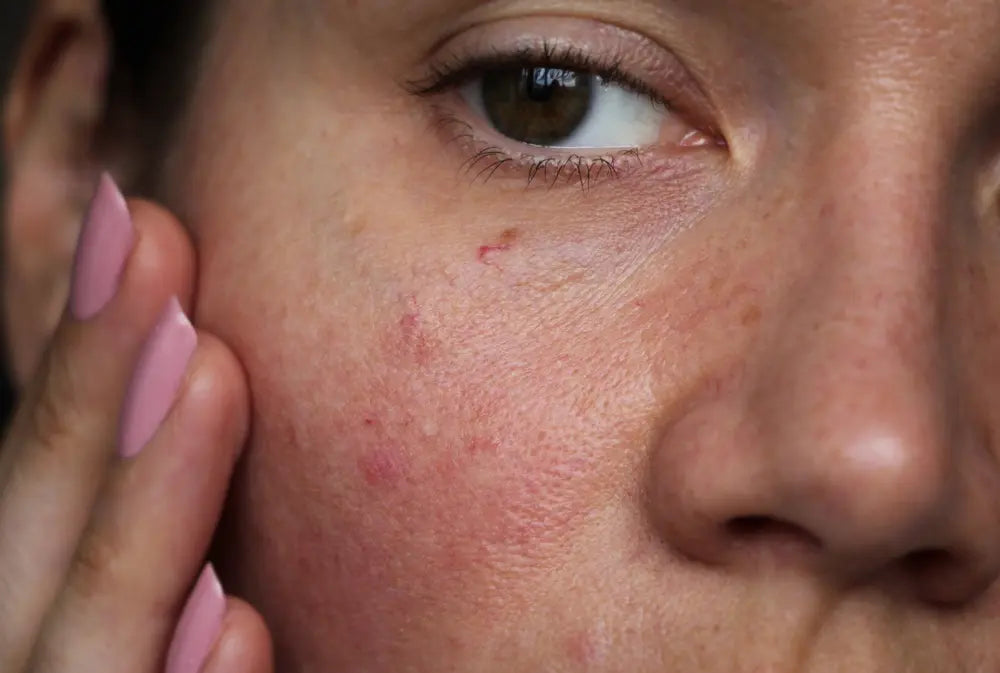
Choosing the Right Hydrating Products for Sensitive,Thin Skin
Share
For individuals with thin, sensitive skin that is prone to redness and heat, selecting the right hydrating products for microneedling is crucial. The goal is to soothe, hydrate, and strengthen the skin barrier while minimizing irritation. Below are recommended types of hydrating products and key ingredients to look for:
1. Hyaluronic Acid (HA)
- Why It’s Good: Hyaluronic acid is a powerful humectant that attracts and retains moisture, providing deep hydration without irritating the skin.
- Product Examples: Hyaluronic acid serums or gels.
- Benefits: Plumps the skin, reduces redness, and improves elasticity.
2. Ceramides
- Why It’s Good: Ceramides are lipids that help restore the skin’s natural barrier, preventing moisture loss and protecting against environmental irritants.
- Product Examples: Ceramide-infused serums or moisturizers.
- Benefits: Strengthens the skin barrier, reduces sensitivity, and calms redness.
3. Panthenol (Pro-Vitamin B5)
- Why It’s Good: Panthenol has anti-inflammatory and soothing properties, making it ideal for sensitive skin.
- Product Examples: Serums or creams containing panthenol.
- Benefits: Reduces redness, soothes irritation, and promotes healing.
4. Centella Asiatica (Gotu Kola)
- Why It’s Good: Centella Asiatica is known for its calming and healing properties, making it perfect for sensitive, reactive skin.
- Product Examples: Centella-based serums or ampoules.
- Benefits: Reduces inflammation, promotes collagen production, and accelerates skin repair.
5. Aloe Vera
- Why It’s Good: Aloe vera is a natural anti-inflammatory and hydrating agent that soothes and cools the skin.
- Product Examples: Aloe vera gels or serums.
- Benefits: Calms redness, reduces heat, and provides instant hydration.
6. Niacinamide (Vitamin B3)
- Why It’s Good: Niacinamide strengthens the skin barrier, reduces redness, and improves hydration levels.
- Product Examples: Niacinamide serums or toners.
- Benefits: Minimizes irritation, evens skin tone, and enhances moisture retention.
7. Peptides
- Why It’s Good: Peptides help repair and regenerate the skin, making them ideal for thin, sensitive skin.
- Product Examples: Peptide-infused serums or creams.
- Benefits: Boosts collagen production, strengthens the skin barrier, and reduces sensitivity.
8. Antioxidants (Vitamin C, Vitamin E)
- Why It’s Good: Antioxidants protect the skin from free radical damage and support skin repair.
- Product Examples: Vitamin C serums or antioxidant-rich ampoules.
- Benefits: Brightens the skin, reduces redness, and promotes healing.
9. Soothing Botanicals (Chamomile, Green Tea, Oat Extract)
- Why It’s Good: These natural ingredients have anti-inflammatory and calming properties.
- Product Examples: Serums or creams containing chamomile, green tea, or oat extract.
- Benefits: Soothes irritation, reduces redness, and hydrates the skin.
10. Growth Factors
- Why It’s Good: Growth factors promote skin repair and regeneration, making them ideal for sensitive skin.
- Product Examples: Serums or ampoules containing epidermal growth factors (EGF).
- Benefits: Accelerates healing, strengthens the skin barrier, and reduces sensitivity.
Tips for Microneedling on Sensitive Skin
- Start with Shorter Needles: Use a needle depth of 0.2mm - 0.5mm to minimize irritation.
- Patch Test: Always perform a patch test before applying new products to ensure compatibility.
- Avoid Harsh Ingredients: Stay away from alcohol, fragrances, and strong acids (e.g., glycolic acid, salicylic acid) during microneedling.
- Post-Treatment Care: Use a gentle, hydrating moisturizer and avoid sun exposure for 24-48 hours.
Conclusion
For thin, sensitive skin prone to redness and heat, hydrating products with soothing and barrier-repairing ingredients are essential. Hyaluronic acid, ceramides, panthenol, and Centella Asiatica are particularly effective for calming and hydrating the skin during microneedling. Always prioritize gentle, non-irritating formulations to achieve the best results.
